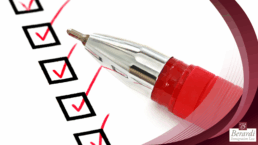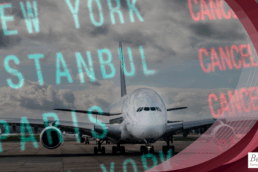Every year, thousands of Canadian “snowbirds” head south to enjoy the sunshine and escape the winter chill. But whether you’re spending a few weeks in Florida or several months in Arizona, proper travel documentation is essential for a smooth trip. Missing or outdated paperwork can cause headaches at the border or even result in denied entry.
This comprehensive checklist will help ensure you have everything in order before you fly or drive to the United States this season.
Why Proper Travel Documents Matter for Canadian Snowbirds
Snowbirds often underestimate how closely U.S. Customs and Border Protection (CBP) tracks visits, documentation, and duration of stay. A misplaced passport, an expired I-94 record, or confusion over registration requirements can all lead to serious complications.
As Jennifer Behm, Esq., Partner at Berardi Immigration Law, explains:
“We see a lot of snowbirds caught off guard by how detailed U.S. entry records have become. Having the correct documentation ready, and understanding what each document means, can save you hours of stress and potential re-entry issues down the road.”
Staying organized doesn’t just protect you legally; it gives you peace of mind, so you can focus on enjoying your time in the sun.
Essential Documents Every Snowbird Must Carry
Before you pack your sunscreen and golf clubs, make sure you’ve assembled the following documents. Each plays an important role in verifying your identity, legal status, and intent to return to Canada.
Valid Canadian Passport
Your passport must be valid for the full duration of your trip. Check the expiration date, many travelers are surprised to find theirs is near expiry. Renew early if necessary; most U.S. border agents require at least six months’ validity.
Proof of U.S. Entry / I-94 Record
Snowbirds entering by air will automatically receive an electronic I-94 Arrival/Departure Record, accessible online. If you drive across the border, you may need to request and print this record manually. It confirms your authorized stay and departure dates, vital information for tax and immigration compliance.
Alien Registration (G-325R) or U.S. Registration for Long Stays
If you plan to stay in the U.S. for more than 30 days, new Homeland Security rules require completing the Alien Registration (Form G-325R) or 30-Day Registration for certain Canadian visitors. This registration provides the U.S. government with your contact and location details while you’re in the country.
NEXUS Card or Trusted Traveler Program (if applicable)
If you’re a frequent border crosser, your NEXUS card streamlines entry by providing pre-approved traveler status. Always carry both your passport and NEXUS card, and remember: NEXUS privileges don’t replace visa or registration requirements.
Proof of Canadian Residency and Ties
Border officers often ask for evidence that you maintain strong connections to Canada. Bring recent property tax bills, mortgage or lease documents, employment verification, or bank statements to demonstrate that your stay is temporary.
Travel Itinerary and U.S. Address Details
Keep a printed or digital record of your travel plans, flight details, and U.S. address (such as a rented condo, RV park, or relative’s home). Officers may request this information upon entry.
Medical Insurance and Travel Health Documents
Never travel without comprehensive travel medical insurance covering your entire stay. Bring your insurance card, policy documents, and any prescriptions in their original packaging.
Driver’s License and Vehicle Documents (if driving or RVing)
Ensure your driver’s license, vehicle registration, and insurance are up to date. If you’re driving an RV, verify coverage for both Canada and the United States. Some insurers require additional riders for extended U.S. stays.
Document Copies and Digital Backups
Scan all key documents and store them securely online using encrypted cloud storage or password-protected folders. Keep printed copies in a separate bag from the originals in case of loss or theft.
Pre-Departure Checklist and Timeline
Preparation should start about 30 days before departure. Use this timeline to stay organized:
- 30 days before: Confirm passport validity, renew if necessary, and check your travel medical insurance coverage.
- 2–3 weeks before: Register with Homeland Security (if required), notify your bank and credit card companies of your U.S. travel, and set up online banking for remote access.
- 1 week before: Print your I-94 record, travel itinerary, and any reservation confirmations. Double-check prescriptions and pack extra medication.
- Departure day: Keep all key documents in your carry-on or glove compartment, never in your checked luggage.
Having these items readily accessible can make crossing the border faster and stress-free.
Legal and Regulatory Considerations for Snowbirds
While snowbird travel may feel routine, the U.S. government tracks each visit carefully. Canadians are generally allowed to spend up to 182 days per calendar year in the United States without a visa, but this time accumulates across multiple trips. Overstaying can affect your eligibility for future entry or trusted traveler programs.
In addition, under U.S. and Canadian tax laws, spending too much time in the United States may trigger U.S. tax residency, requiring additional filings. Keep a written record of your entries and exits to avoid confusion.
Finally, always stay informed about evolving registration requirements. As of 2025, the Department of Homeland Security’s 30-Day Registration Rule mandates that Canadians staying longer than 30 days provide up-to-date contact details.
“These regulations are changing quickly,” notes Behm. “Snowbirds should check the latest government updates before each trip and consult an immigration attorney if they plan longer stays or own property in the U.S.”
How Berardi Immigration Law Helps Canadian Snowbirds Travel With Confidence
At Berardi Immigration Law, we’ve helped hundreds of Canadian snowbirds and cross-border travelers prepare for stress-free U.S. visits. Our attorneys review your travel history, advise on registration requirements, and ensure your documentation aligns with U.S. entry and tax rules.
We also assist with completing forms like the G-325R, interpreting I-94 records, and advising retirees who plan to purchase property or extend their stays. For snowbirds managing multiple U.S. trips each year, our team helps track cumulative time in the country to avoid inadvertent overstays.
If you’re uncertain about your travel documentation or long-stay eligibility, schedule a consultation before your next departure. We’ll make sure you’re fully prepared so you can enjoy your winter getaway with complete peace of mind.
Frequently Asked Questions
How long can Canadian snowbirds stay in the U.S. each year?
Typically, Canadians can spend up to 182 days (about six months) in the U.S. per calendar year without a visa. Longer stays may trigger tax or registration obligations.
What happens if I stay longer than allowed?
Overstaying can affect your future entry eligibility, trusted traveler status, or U.S. tax obligations. Always monitor your cumulative days in the U.S. carefully.
Do I need travel insurance for short visits?
Yes. Even a brief trip can result in unexpected medical expenses. Comprehensive travel medical insurance is strongly recommended for all visitors.
Travel Smart, Stay Prepared, Enjoy the Sunshine
Being a Canadian snowbird is about enjoying freedom, not worrying about paperwork. With a valid passport, clear documentation, and a trusted legal advisor, you can cross the border confidently and focus on what really matters: Warm weather, relaxation, and peace of mind.
Berardi Immigration Law is proud to support snowbirds as they navigate evolving U.S. travel rules. Before you head south, let our team ensure your journey is seamless, safe, and fully compliant. Click here to contact us today.
Ready to have Berardi on your side?
Whether you’re a business looking to hire or a professional hoping to relocate, immigration law can be complicated. But you don’t have to do it alone. Put our experience to work for you.



